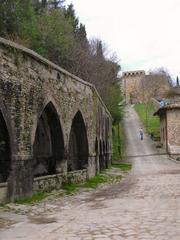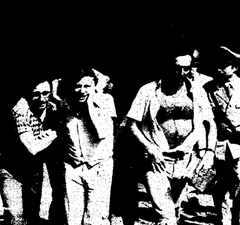San Gimignano Visiting Hours, Tickets, and Historical Sites Guide
Date: 03/07/2025
Introduction to San Gimignano
San Gimignano, often called the “Medieval Manhattan” for its dramatic skyline of stone towers, stands as one of Tuscany’s most iconic hill towns. Perched atop the rolling landscape, San Gimignano preserves a remarkably intact medieval urban fabric—a testament to its historical and cultural legacy. The town’s 14 surviving towers (from an original 72 in the 14th century) dominate the skyline, reflecting centuries of rivalry among noble families and the town’s strategic importance on the Via Francigena pilgrimage route.
Renowned for its architectural landmarks—such as the Collegiata di Santa Maria Assunta (the Duomo) and the Palazzo Comunale—San Gimignano is also celebrated for its artistic heritage, including frescoes by Ghirlandaio and Gozzoli. The town’s enduring traditions, from Vernaccia wine production to saffron cultivation, further enrich the visitor experience.
This guide provides essential information on San Gimignano’s visiting hours, ticketing, accessibility, travel logistics, and unmissable sites, as well as insights into special events, guided tours, and photographic highlights. Whether you arrive by car, bus, or as part of a guided tour, you’ll find practical tips for exploring the pedestrian-only historic centre of this UNESCO World Heritage Site (History Tools, UNESCO, Sangimignano.com).
Table of Contents
- Introduction
- Historical Overview
- Visitor Information
- Special Events and Guided Tours
- Photographic Spots and Nearby Attractions
- FAQ
- Conclusion
- Visuals and Interactive Elements
- Sources and Further Reading
Historical Overview
Ancient and Early Foundations
San Gimignano’s roots reach back to Etruscan settlements as early as the 3rd century BCE (History Tools). The Romans established a settlement here, capitalizing on the strategic location along the Via Francigena, which became a crucial artery for pilgrims and merchants (Italygonia). Agriculture, particularly grape and olive cultivation, set the foundation for San Gimignano’s economic traditions.
Medieval Ascendancy and the Age of Towers
The town rose to prominence in the Middle Ages as a vital stop on the pilgrimage route to Rome. In 998 AD, San Gimignano was first mentioned in historical records (Mad Traveller). By 1199, it achieved status as an independent commune. Fierce competition among wealthy families led to the construction of 72 towers—some over 50 meters tall—by the 13th and 14th centuries, serving both as fortifications and status symbols (Love to Visit Italy). The influx of pilgrims and merchants spurred population growth and prosperity.
Urban Layout and Architectural Heritage
San Gimignano’s historic centre is a masterpiece of medieval urban planning (History Tools). The town’s layout—narrow stone streets, fortified walls, and dramatic towers—remains largely unchanged. Today, 14 towers survive, with Torre Grossa (54 meters) open to visitors for panoramic views (Frewaphoto). Landmarks such as the Collegiata di Santa Maria Assunta, famed for its Renaissance frescoes, and the Palazzo Comunale, with its historic council chamber and art collections, anchor the town’s civic life (Love to Visit Italy).
Economic and Cultural Flourishing
San Gimignano flourished economically thanks to its location on the Via Francigena (Italygonia). Saffron and Vernaccia wine became prized exports, a tradition still alive today. Artistic patronage brought fresco cycles and architectural embellishments to churches and palaces, many preserved in situ or in the Museo Civico.
Decline, Rediscovery, and Preservation
After the 14th century, plague, war, and the rise of Florence led to San Gimignano’s decline (History Tools). Its isolation, however, helped preserve the medieval core. Rediscovered in the 19th century by artists and travelers, the town was later protected by conservation efforts, culminating in its UNESCO World Heritage listing in 1990 (UNESCO).
The Living Medieval Town
Today, San Gimignano is a vibrant community where residents uphold centuries-old traditions. Festivals, markets, and artisanal shops animate the streets, and visitors can explore museums, climb towers, and enjoy views of the Tuscan countryside (Frewaphoto).
Visitor Information
Visiting Hours
- Historic Centre: Open year-round.
- Museo Civico & Torre Grossa: Daily, 10:00 AM–7:00 PM (seasonal variations possible).
- Collegiata di Santa Maria Assunta: Daily, generally 10:00 AM–6:30 PM.
Tickets and Prices
- Combined Museo Civico & Torre Grossa Ticket: ~€9 for adults; discounts for EU citizens 18–25, students, and seniors. Free for children under 18.
- Collegiata and other attractions: Covered by the San Gimignano Pass; individual ticket prices from €4–€9.
- Purchase: At the ticket office in Piazza del Duomo or online via the official tourism website.
Accessibility
The medieval core features cobblestone streets and inclines. Key sites offer some accessibility accommodations; advance notice is recommended for visitors with mobility needs.
Getting There
- By Car: Accessible via SR429; park outside the city walls (e.g., Parcheggio Santa Chiara, Parcheggio Montemaggio). Elevators and paths connect parking to the city gates (Strictly Italy).
- By Bus: From Florence (with transfer at Poggibonsi) or Siena.
- Guided Tours: Available from Florence, Siena, and other cities, often including transportation and local experiences (Culture Activities).
Special Events and Guided Tours
- Medieval Festival (Ferie delle Messi, June): Historical reenactments, parades, and music.
- Vernaccia Wine Festival (May): Tastings and culture events.
- Guided Tours: History, art, and gastronomy-focused tours run daily; audio guides and virtual tours are also popular.
Photographic Spots and Nearby Attractions
- Best Views: Torre Grossa, Piazza della Cisterna, city walls.
- Nearby Sites: Siena, Volterra, Monteriggioni, and the Chianti wine region.
Frequently Asked Questions (FAQ)
Q: What are the main visiting hours?
A: Major sites generally open 10:00 AM–7:00 PM; always verify seasonal schedules.
Q: How do I get tickets?
A: Purchase combined or individual tickets at the ticket office or online.
Q: Is San Gimignano accessible for people with disabilities?
A: Some key attractions have accessibility features; contact venues in advance for details.
Q: Are guided tours available?
A: Yes, including historical, art, and culinary tours. Bookings recommended.
Q: What’s the best time to visit?
A: Early morning, late afternoon, or off-peak seasons (autumn, spring) for fewer crowds.
Conclusion
San Gimignano is a living museum of medieval Tuscany, where towers soar above cobbled streets and Renaissance frescoes illuminate ancient churches. With practical information on visiting hours, tickets, accessibility, and local events, visitors can plan an immersive exploration. The town’s strategic location also makes it a perfect base for day trips to other historical gems. Remember to check official resources for the latest updates and consider downloading the Audiala app for audio guides and insider tips.
For deeper insights, explore our related guides on Tuscany’s historical sites and follow our social channels for travel inspiration.
Visuals and Interactive Elements
- Images: Include photographs of Torre Grossa, Piazza della Cisterna, panoramic views from the city walls, and Collegiata frescoes, with optimized alt text (e.g., “San Gimignano towers,” “Tuscany hill town map”).
- Maps & Virtual Tours: Interactive maps and virtual walking tours are available on official tourism sites and via apps like Audiala.
Sources and Further Reading
- History Tools, Stepping Back in Time in San Gimignano: A Medieval Tuscan Treasure
- Italygonia, San Gimignano History: A Journey Through Time in Tuscany
- UNESCO, Historic Centre of San Gimignano
- Sangimignano.com, San Gimignano Official Tourism
- Frewaphoto, Ultimate Guide to Visiting San Gimignano, Tuscany
- Visit Italy, The Historical Centre of San Gimignano UNESCO World Heritage Site

